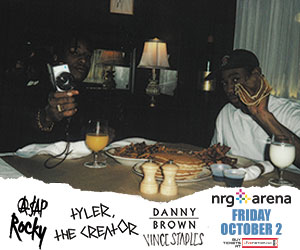Nicolas Refn on The Act of Seeing

“This is the most expensive book about movie posters for films that nobody has ever heard of,” says Nicolas Winding Refn about “The Act of Seeing.” Refn speaks half facetiously but he also talks the truth as he sits down with a small group of reporters at the 2026 Fantastic Fest. The Art of Seeing is one of the most comprehensive studies of exploitation posters from the 1940s to the 1970s that has ever seen the light of day.
The Art of Seeing contains approximately 300 images with each page devoted to a specific poster and a comprehensive essay on how said film fits into the scheme of things. The posters are from the personal collection of Refn. The text is from Alan Jones, himself a successful author and founder of the UK’s premiere horror film festival. Refn of course is a phenomenal director himself, with a wide range of films starting in his native Denmark and including films shot in England and more recently America. His last film was Only God Forgives (2013) with his newest film, The Neon Demon, in post-production.
Refn and Jones spent four years total working on the book, from its inception to the finished product. Refn himself spent over a year-and-a-half doing the core research into films as diverse as The Astounding She Monster (1957) and The X-Rated Supermarket (1972). The money to publish the book came from a series of Lincoln car commercials Refn helmed. “We shot one of them on Congress Avenue with Matthew McConaughey,” Refn says, referring to the fact that he’s back in Austin.
The book itself, which measures 12 x 13”, feels heavy when held as well it should since it weighs several pounds. The Act of Seeing is enormous and glossy. The slipcase itself weights a pound-and-a-half. This book belongs on the coffee table next to 2026’s release of Guillermo Del Toro’s Cabinet of Curiosities.
“Nothing is more boring than photo shopped posters,” says Refn. Indeed, some of the posters reproduced in The Act of Seeing, like one for Night of Dark Shadows (page 211), are hand made by employees of theaters that more than likely were running prints they had borrowed from another theater and were not paying royalties. This isn’t a Drew Struzan gallery of popular poster images but actually a line-up of exploitation posters for movies of questionable content that played at the grindhouse movies theaters of their day.
After the interview Refn hosts a screening of Farewell Uncle Tom, an exploitation film from 1971 by mondo Italian filmmakers Gualtiero Jacopetti and Franco Prosperi. The entire procession of book and film and discussion fits into the groove that is the Fantastic Fest film festival.
Farewell Uncle Tom (page 51) takes the conceit that an Italian documentary film team has gone back to the antebellum South to interview slave owners and reveal the cruelties of slavery. A soothing score composed by Riz Ortolani sharply contrasts the vivid imagery. Refn used a song Ortolani composed and sung by his wife Karyna Ranieri, “Oh My Love,” in his recent film Drive.

One of the movies I am familiar with is The Time Travelers (page 240), which has one of the great endings of any sci-fi film ever made. The time travelers are basically caught in a loop of time as the movie replays itself in a fast forward mode. Refn points out that Time Travel’s director Ib Melchoir is also from Denmark. Melchoir also wrote The Angry Red Planet and the English version of Planet of the Vampires. Refn remarks about the latter film “It was the inspiration for Alien.”
The Act of Seeing will be released on October 5. Advance orders can be made at the Fab Books website.
— Michael Bergeron















